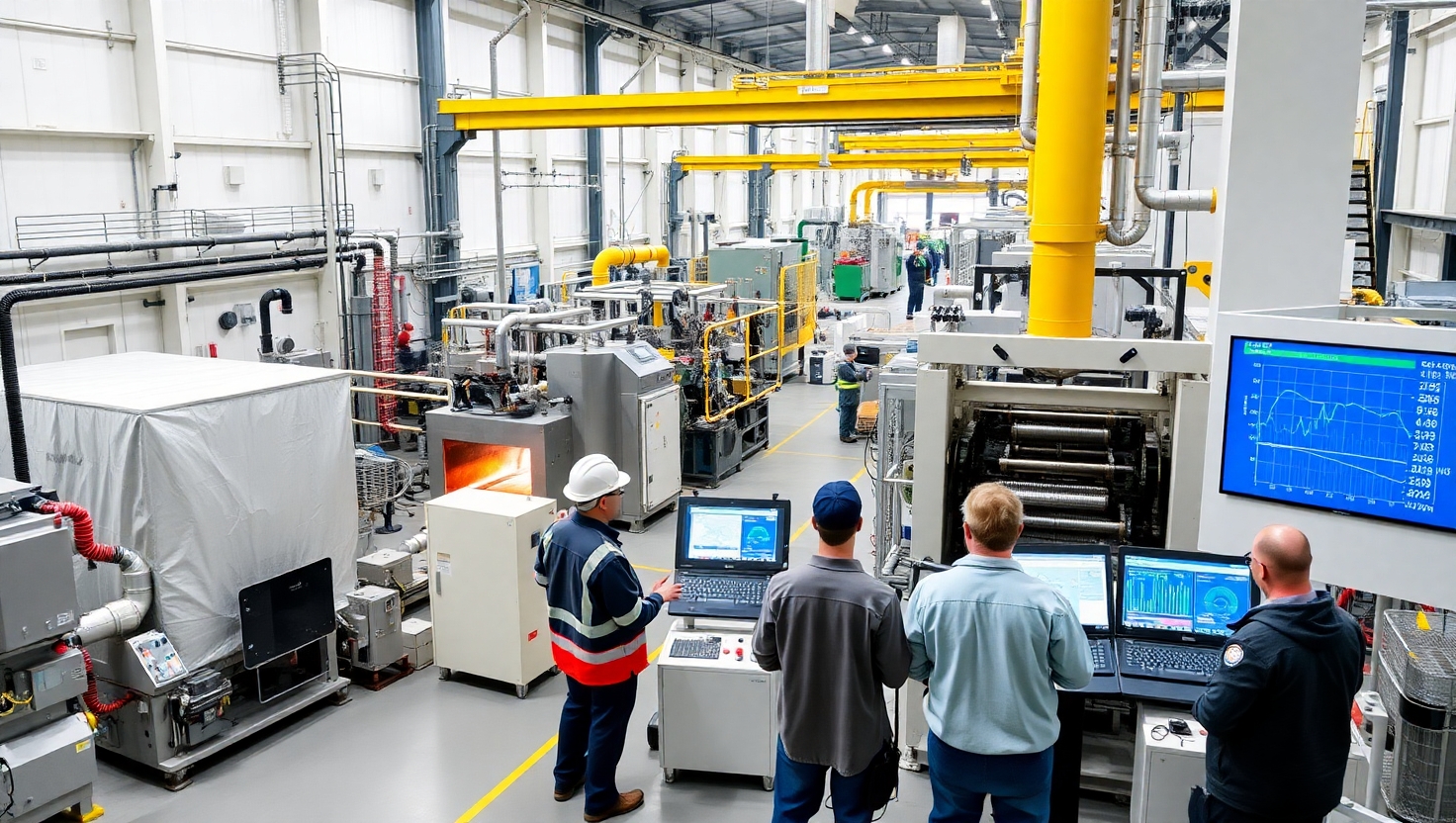Energy Efficiency in Aluminum Extrusion: Best Practices for 2025
Published by: ALUTimes | Date: July 17, 2025
Table of Contents
- Introduction
- Why Energy Efficiency Matters in 2025
- Conducting Comprehensive Energy Audits
- Improving Thermal Efficiency in Furnaces
- Automation and Smart Controls
- Optimizing Compressed Air Systems
- Case Studies: Successful Implementations
- Government Incentives and Compliance
- Conclusion
- Disclaimer
Introduction
As the aluminium extrusion industry continues to expand, energy costs and environmental concerns are pressing issues. This guide offers practical insights into how extrusion plants can improve their energy efficiency while maintaining production quality and output. Whether you’re a plant manager, engineer, or sustainability officer, these 2025 best practices will help you optimize operations.
Why Energy Efficiency Matters in 2025
Increased global demand, higher electricity prices, and climate change regulations are driving aluminium extruders to improve their energy performance. The aluminium industry accounts for approximately 3% of global industrial energy consumption. Efficient processes can reduce operational costs by 10–30%, while contributing to ESG goals.
Conducting Comprehensive Energy Audits
Energy audits are the foundation of any efficiency improvement program. They help identify key areas of waste, benchmark energy usage, and set achievable KPIs. A comprehensive audit includes:
- Baseline data collection for all equipment
- Thermographic inspection of thermal equipment
- Energy intensity metrics (kWh/kg of extrusion)
- Review of process flow and inefficiencies
Improving Thermal Efficiency in Furnaces
Furnaces consume up to 50% of energy in extrusion plants. Improving their efficiency includes:
- Installing regenerative burners for higher heat recovery
- Insulating furnace linings with ceramic fiber boards
- Implementing billet preheating with induction coils
- Maintaining optimal burner-to-load ratio
Automation and Smart Controls
Modern extrusion facilities are integrating IoT-based automation to monitor and control energy use. Key examples include:
- PLC-controlled cooling zones to prevent overcooling
- Smart power factor correction systems
- Load scheduling algorithms for peak-demand optimization
- Real-time dashboards for predictive maintenance alerts
Optimizing Compressed Air Systems
Compressed air systems can account for 10–15% of a plant’s energy use. Best practices include:
- Eliminating leaks and improper fittings
- Using VFD-based air compressors
- Reducing pressure drops via efficient piping layout
- Recovering heat from compressors for other heating purposes
Case Studies: Successful Implementations
Jindal Aluminium: Achieved a 20% reduction in energy use by replacing legacy furnaces with high-efficiency systems and introducing automated billet loading.
Hindalco Industries: Implemented AI-based monitoring tools that predicted energy spikes, reducing downtime and cutting peak-hour consumption by 18%.
Government Incentives and Compliance
Several governments now offer financial incentives for adopting green manufacturing practices. In India, the Perform, Achieve and Trade (PAT) scheme allows plants to earn tradeable credits for reducing energy consumption below target levels. In the EU, Carbon Border Adjustment Mechanisms (CBAM) will soon reward energy-efficient exporters.
Conclusion
Energy efficiency is no longer a choice—it’s a competitive advantage. By adopting these best practices, aluminium extrusion plants can improve profitability, reduce their environmental impact, and future-proof their operations for a sustainable 2025 and beyond.
Disclaimer
This article is intended for informational purposes only. Readers should consult engineering professionals before making any modifications to energy systems or operations. ALUTimes is not liable for decisions based on this content.

